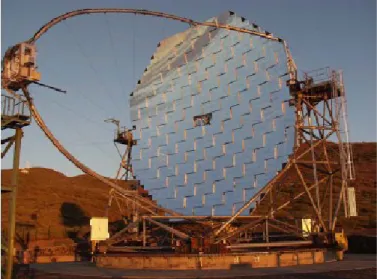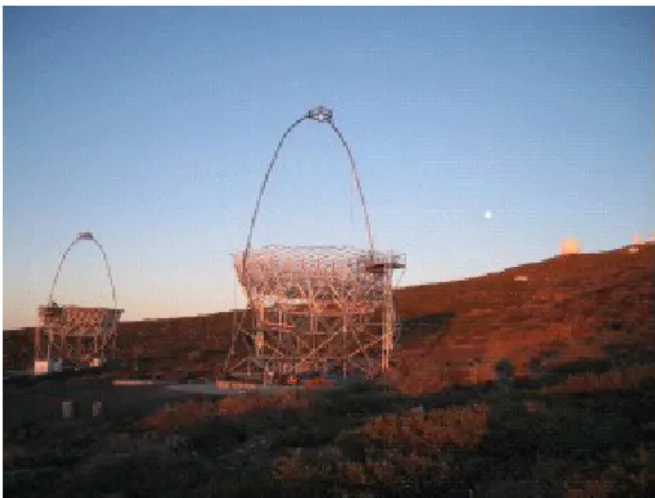Abstract—The MAGIC telescope with its 17 m diameter mirror is today the largest operating sinlge dish Imaging Cherenkov Telescope. It is located on the Canary Island la Palma, at 2200 m above sea level, as part of the Roque de los Muchachos European Northern Observatory. It was inaugurated in October 2003, and it is taking data since autumn 2004. A second telescope of the same type is under construction for stereoscopic observations.
I. I NTRODUCTION
The 17-meter diameter MAGIC cosmic gamma-ray telescope (located at La Palma, 28.8
0N, 17.8
0W, 2220 m asl) is currently the largest and technologically most advanced imaging atmospheric Cherenkov telescope (IACT), Figure 1, [1-2].
Figure 1: The MAGIC telescope, summer 2004 Together with other new IACTs and satellite-borne instruments, the MAGIC Telescope is aiming to open and explore a new window in the spectrum of cosmic
electromagnetic radiation, between 30 and 250 GeV. MAGIC has a particularly important mission—to uncover the lower half of this interval, below 100 GeV, which may be decisive for several important scientific topics: the physics of various galactic and extragalactic gamma-ray sources, extragalactic background light (EBL), gamma ray bursts (GRB), pulsars, detection of dark matter, tests of quantum gravity, and the longstanding problem of the origin of cosmic rays. This important energy window has been ‘hostile’ to experimental research, because the energy has been too high for the small space-borne experiments, and at the same time too low to allow the IACTs to detect a significant number of Cherenkov photons[3-4].
Thanks to its 241 m
2mirror area and numerous techniques introduced for the first time in this field, MAGIC now provides high enough sensitivity in order to reach a detection threshold of only 30 GeV [5]. We started with regular data

